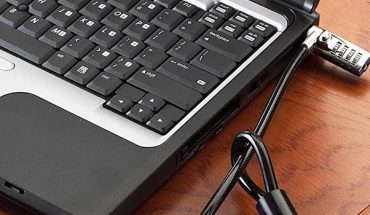While the second-hand economy is thriving as a new generation seeks to get the most out of their products, the reality is that lots of electronics still end up in landfills. And this is harmful to the environment. This is why it’s absolutely crucial to recycle your old electronics. And it’s actually easier than you might think to do, with several options worth considering.
Visit a local drop-off site
Many chain stores that sell electronics also have drop-off sites where you can recycle your old electronics. Best Buy, for example, has a Battery and Electronics Recycling Program that works in conjunction with the Electronics Products Recycling Association (EPRA) and Call2Recycle. At any Best Buy store across Canada, with the exception of kiosks and Mobile stores, you can bring in products like batteries, computer peripherals, cords, cables, microwave ovens, and more, whether you purchased them at Best Buy or not, and they will safely recycle it. There are Call2Recycle boxes at the front of stores where old batteries can be dropped off, while other items can be taken directly to the customer service desk.
Staples, meanwhile, also offers recycling services at its store locations, ranging from batteries and cables to laptops, hard drives, routers, phones, and more. There are some items they cannot accept, like large speakers, appliances, and lamps or bulbs. There is also a limit of seven items per customer, per day. But for the most part, you can drop off old electronics at large-format Staples store for safe and responsible recycling.
Contact your local municipality and other facilities
Every municipality has programs that make it simple to recycle old electronics. If you visit your local waste management facility, there will likely be a section for dumping old electronics for safe and responsible recycling. A visit will cost you (usually a minimum of about $5, based on weight), so it’s best to gather up all the old stuff and make one big trip.
There are other facilities as well, like Re-Source Recycling, which provide recycling services for a fee, but will appeal to those who want confirmation via a Certificate of Destruction that any sensitive information left on a device, including potentially confidential information, was eliminated. (It should be noted that you should always do a complete wipe of devices before reselling or even recycling them.) They will also come to you to pick up the item, which might be worth the extra money if it’s a large appliance or TV.
As a free service, Recycle My Electronics has more than 2,500 authorized collection sites across Canada where you can drop off old, end-of-life electronics. Simply look up your postal code on the website to find the one closest to you. You’ll find both return to retail partners, like Staples, Best Buy, and Visions, as well as standalone locations, where available.
Trade-ins
Lots of manufacturers, electronics stores, telecommunication companies offer enticing trade-in programs that are a win-win for customers and the environment. When you want to upgrade to a new device, you can trade-in an old one, even if it’s non-functioning, and get a credit towards the new purchase. For older-model defective devices, the trade-in value will likely be nominal. But you get a small discount and peace-of-mind that the manufacturer will strip the old product for useful parts and materials and responsibility dispose of the rest.
With Apple for example, once you commit to the trade-in and buy a new iPhone, Apple will send a trade-in kit and e-mail with instructions on how to prepare the phone for trade-in. When the old phone has been received and inspected to fit the conditions you describe (you must report if it’s non-functioning, for example, or has cracks or scratches) you’ll be notified via e-mail for next steps.
Hand-me-down or resell
Recycling is a great way to re-use old and valuable materials but consider that if a piece of electronics is still in working condition and doesn’t pose a safety hazard, there’s always the option to pay it forward. Hand an old phone down to a friend or family member – a five-year-old iPhone might no longer serve your business needs but it might be the perfect device for a parent to give their tween as a “for emergencies only” phone. Some old electronics can be donated, like a coffee machine or microwave you have replaced that would be appreciated by a local shelter.
Then, there are resell sites, from Kijiji to Facebook Marketplace, that function like online flea markets. One person’s trash is another person’s treasure, as the saying goes, and there might be someone who could use an old AV receiver or TV or smartphone you have just replaced or no longer have any use for. Even if it’s non-functioning, there are people who love to tinker with old gadgets, taking them apart. Even if you offer it up for free, you’ll know it’s being put to good use instead of ending up in a landfill. But for good-condition electronics you no longer use, you could make a bit of money in the process while also doing your small part to help to save the environment.
Related:
Global Health Hazard: A Pandemic of Harmful E-waste and Recycling Activities
Canadian Company Energized by Li-Ion Battery Recycling for Good Reasons
Waste 3D Printing Materials Transformed into Vehicle Parts by Ford and HP



